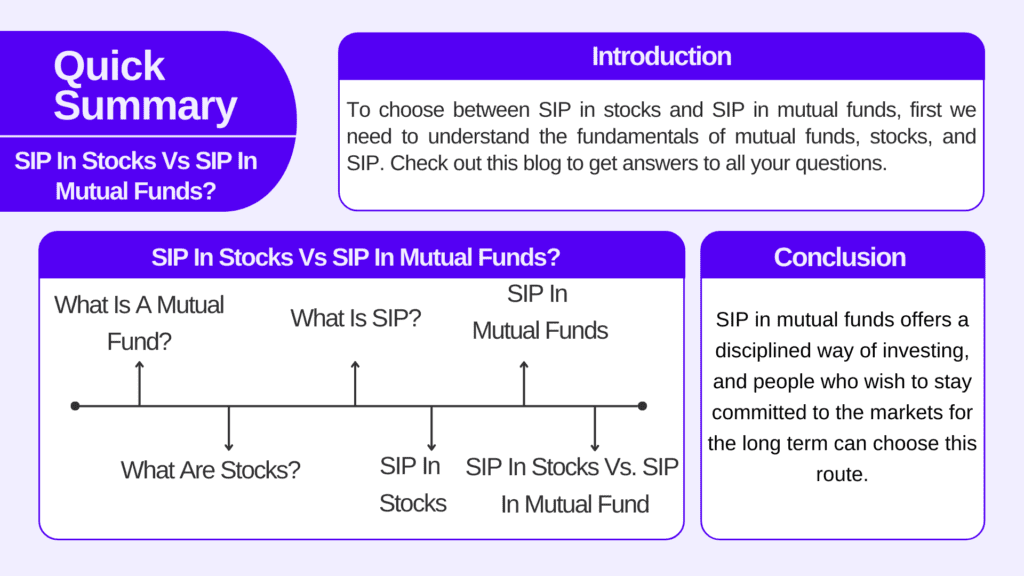| Type | Description | Contributor | Date |
|---|---|---|---|
| Post created | Pocketful Team | Dec-04-23 | |
| Add new links | Nisha | Mar-12-25 |
Read Next
- Tata Technologies Vs TCS: Which is Better?
- Multibagger Penny Stocks for 2025
- Tata vs Reliance: India’s Top Business Giants Compared
- What Is The Difference Between Large Cap, Mid Cap, And Small Cap Funds?
- Government Bonds India – Types, Advantages, and Disadvantages of Government Bonds
- 10 Best Consumption Stocks in India
- Types of ETFs in India: Find the Best for Your Investment
- Iran–Israel War Impact on Indian Stock Market
- Difference Between Trading and Investing
- What is Coupon Bond?
- What Happens If a Stockbroker Shuts Down?
- 5+ Best VFX Stocks in India 2025
- 10 Best Penny Stocks with High FII Holding
- Top 10 Best Summer Stocks in India
- Best 5G Stocks in India to Invest 2025
- Features and Benefits of ETF (Exchange Traded Funds)
- Best ETFs in India to Invest in 2025
- Gold BeES vs Silver BeES: Which is the Better Investment?
- Gold ETF vs Gold Mutual Fund: Differences and Similarities
- How to Invest in Gold ETF – Benefits, Risks and Charges
- Blog
- sip in stocks vs sip in mutual funds
SIP in Stocks vs SIP in Mutual funds?

Which can be a better choice?
To choose between SIP in stocks and SIP in mutual funds, first we need to understand the fundamentals of mutual funds, stocks, and SIP. Check out this blog to get answers to all your questions.

What is a Mutual Fund?
It’s a pooled investment fund overseen by a professional fund manager. It gathers funds from investors who want to invest in the stock market. Depending on the type of mutual fund, these collected funds are then diversified into various asset classes. Mutual funds can differ from, open-ended to close-ended, and from actively managed funds to passively managed funds. Every mutual fund unit is allotted NAV, which is net asset value. It is the combined value of all the asset classes that you hold in your portfolio.
What are Stocks?

A stock, also known as equity or share, represents a part of ownership that an individual holds in a corporate or government company. Investing in stocks carries a level of higher risk because the value of a stock can be influenced by various factors, including the company’s financial performance, economic conditions, and market sentiment. However, stocks have historically offered higher returns compared to other investment options.
What is SIP?

SIP stands for Systematic Investment Plan. It is an investment method in mutual funds and stocks where you invest a fixed amount of money at regular intervals. SIP can be done for an amount as small as INR 500. SIPs are long-term investment strategies that help you compound your money over the years.
Having discussed the basics of mutual funds, stocks, and SIP, let us go through what SIP in mutual funds and SIP in stocks looks like.
SIP in Stocks
SIP in stocks involves regular investment in a specific stock at pre-determined intervals. Stock SIP can be used for averaging your shares, thereby reducing their purchase price. The concept of stock is more or less similar to SIP in mutual funds, which we shall discuss later in this blog.
Below are some key facts an investor should know before choosing stock SIPs.
- SIP in stocks will give you direct exposure to individual stocks that can help you generate better returns, but as you know, reward and risk go hand in hand. This SIP method is susceptible to market fluctuations, which can significantly impact returns.
- SIP in stocks will give you more freedom as you are solely responsible for selecting your allocation. However, selecting specific stocks involves in-depth research and analysis of companies as well as the overall trend of the market, which can be challenging and stressful at times.
- Stock SIPs involve regular monitoring of the stocks and can be a tough task.
- Diversification of the portfolio becomes difficult when using SIPs in stocks because it can be difficult to maintain multiple SIPs and stay current on research and new developments.
Stock SIPs can be a good option for investors who are well-versed in market fluctuations. However, for most of the investors, it is suggested to do SIP in mutual funds.
SIP in Mutual Funds
Mutual fund SIP involves regular investment of a fixed amount into a mutual fund. This method indirectly invests in multiple stocks and other instruments; therefore, it allows investors to allocate capital as per their risk profile. There are a plethora of mutual funds available in the industry, ranging from equity based to debt based. Check out our blog on mutual funds to learn more!
Below are some key points that an investor should remember before choosing SIPs in mutual funds:
- Mutual funds offer diversification and carry less risk as compared to stock, as mentioned earlier, and reduce the impact of poor performance of a single security.
- Investors can start their financial journey with mutual fund SIPs from as low as INR 100, which makes it accessible to people of all income groups in a country like India, but keep in mind that mutual fund investments are always subject to market risk.
- Mutual fund SIPs allow disciplined and regular investing. You do not need to monitor and analyze your portfolio on a daily basis.
- There are two ways to transact SIPs:
- You can manually pay the amount via UPI, Net banking, etc., at intervals.
- You can set-up an auto mandate authorizing your bank to automatically deduct a specified amount from your bank account at every interval.
- Similar to stock SIP, investors can enjoy the benefits of rupee cost averaging in mutual funds SIP. With this, the NAV of the mutual fund unit will be allotted at lower prices.
- Investors can choose SIPs based on their risk profile and financial goals, such as equity funds for capital appreciation, debt funds for stability, or hybrid funds for a balanced approach. However, before choosing any scheme, be aware of the expense ratio and other fees associated with mutual funds.
Read Also: SIP vs Lump Sum: Which is Better?
SIP in stocks vs. SIP in mutual Fund
Let’s explore the table of differences below for a better understanding:
| Basis | SIP in Stocks | SIP in Mutual Fund |
|---|---|---|
| Risk | High – Market expertise is required | Risk is comparatively lower as it is managed by a fund manager. |
| Research Requirement | High | Low to none |
| Management | Self-directed | Professionally managed |
| Ownership | Direct ownership in your de-mat account | Indirect ownership as shares are purchased by mutual funds and its units are allocated to you |
| Charges | Only transaction related expenses are incurred. Click here to learn more. | It includes several charges: expense ratio (covers admin-related expenses and fund manager fees), exit load, redemption fees, etc. |
Conclusion

SIP in mutual funds offers a disciplined way of investing, and people who wish to stay committed to the markets for the long term can choose this route. However, it is suggested to only those investors who are aware of the market technicalities and are willing to research companies. It requires active involvement as compared to mutual fund SIPs.
In summation, before starting your SIPs, carefully assess your financial goals and risk appetite. It is advised that you speak with a financial advisor to receive individualized portfolio support.
Further, click here to explore all the different investment options!
| S.NO. | Check Out These Interesting Posts You Might Enjoy! |
|---|---|
| 1 | Mahindra & Mahindra vs Tata Motors: Which is Better? |
| 2 | Bank of Baroda vs SBI Bank: Which is Better? |
| 3 | PNB Vs Bank of Baroda: Which is Better? |
| 4 | MRF vs Apollo Tyres: Which is Better? |
| 5 | Bank of Baroda Vs Canara Bank: Which is Better? |
Frequently Answered Questions (FAQs)
What is the full form of SIP?
SIP stands for Systematic Investment Plan.
Which is better? Stock SIP or Mutual fund SIP?
It depends on individual financial goals and preferences.
How many stocks can you choose when doing Stock SIP?
You can start SIP in as many stocks as you want. However, in a well diversified portfolio, atleast 30 stocks are suggested.
Does SIP in stocks has higher risk than SIP in Mutual Funds?
Yes. SIP in stocks is comparatively riskier.
What is the minimum amount of SIP required to invest in Mutual Funds?
SIP in a mutual fund starts from as low as INR 100.
Disclaimer
The securities, funds, and strategies discussed in this blog are provided for informational purposes only. They do not represent endorsements or recommendations. Investors should conduct their own research and seek professional advice before making any investment decisions.
Article History
Table of Contents
Toggle